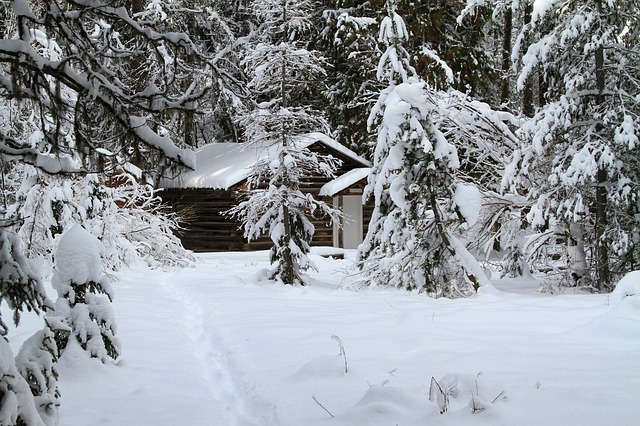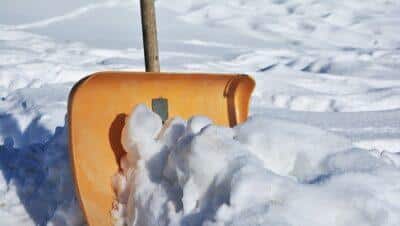Even for the seasoned outdoorist, it’s good to review wintertime safety protocols so that they are fresh in your mind.
Too often we become relaxed, believing that nothing bad will happen to us. Yet things don’t always go as planned, and it is better to be safe than sorry.
Here are four wintertime safety and awareness issues that everyone should keep in mind.
1. Watch out for black ice.
Black ice is ice hidden under the snow. It can be on roads, walkways, steps or even in your yard where the ground is hard. Fresh snow can create the illusion that it is safe to walk on it. An unexpected fall on ice can lead to serious injuries – and if you hit your head, even death.
Sometimes, though, walking on ice in unavoidable. If so, walk like a penguin. Yes, a penguin! Waddling like a penguin allows you to maintain balance by centering your upper body over your legs. Simply hold your arms out at your sides, keep your feet shoulder distance apart, and take small, waddling steps. Remember to breathe and to stay limber, as well. If you do fall, keeping limber can protect your body from injury, as being too stiff can make injuries worse. Also, try to land on your bum or upper thighs where you have more padding, as opposed to trying to stop the fall with your hands, which can result in fractures or breaks.
2. Know the signs of frostbite.
Frostnip is the tingling feeling that happens first, and it is a warning sign that your body parts are becoming too cold. When you feel tingling in your fingers, hands, toes, feet, nose or ears, it is a sign that you need to warm up. If you ignore the signs, it can lead to frostbite. During this first stage, you will notice redness, and it might be painful, but permanent damage will not occur as long as you take action.
Handheld Device Provides Emergency Back-up Power
Frostbite begins when your skin becomes numb and starts to turn pale, or even white. You may start to feel warm, but this is not a good sign at this stage because it is an adverse reaction to the frostbite. If not treated immediately, the skin of the affected body parts will start to die and will turn black.
As your body tries to fight the frostbite, you may experience intense shivering, loss of coordination, slurred speech and drowsiness. It is imperative to seek warmth and emergency help as soon as possible.
3. Monitor carbon monoxide levels.
Carbon monoxide is an odorless, invisible gas. Without taking proper measures, you will not know it is present until it is too late. Therefore, it is imperative to keep a carbon monoxide detector in your home and any other place where you use a heat source.
Carbon monoxide can be produced from a natural gas or wood fireplace, as well as from kerosene and similarly fueled heaters. A good way to prevent carbon monoxide poisoning is to have your equipment checked each season and ensure there is proper ventilation.
Here are the signs of carbon monoxide poisoning:
- A dull headache.
- Weakness.
- Dizziness.
- Nausea.
- Shortness of breath.
- Blurred vision.
- Vomiting.
- Confusion.
- Loss of consciousness.
Don’t let these symptoms fool you into thinking you simply have the flu, especially if you use one of the heat sources mentioned. Get outside immediately in the fresh air. Call 911 as soon as possible and have your home and source tested for the leak.
4. Watch for the signs of hypothermia.
Don’t take shivering lightly. It could be a sign that your core body temperature is dropping. Shivering doesn’t mean you are in danger yet, however. You still have time to act. If the shivering becomes uncontrollable, more than likely hypothermia is setting in. It is imperative that you get to a warm place soon.
Know the signs of hypothermia:
- Start to feel clumsy.
- Feeling drowsy.
- The shivering becomes uncontrollable.
- The shivering stops
- Your speech is slurred.
- You notice you are making poor decisions.
- Your energy levels are dropping fast.
Treatments for hypothermia:
- Remove any wet clothing.
- Keep moving. You need to raise your body temperature.
- Move toward warmth and a shelter if possible.
- Begin re-warming with dry clothing, blankets, heat packs or by a fire.
- Drink hot liquids — but, not alcohol or caffeine, which can aid in heat loss.
Remember that other hazards are possible too, such as injuries from shoveling snow. Be smart, be aware, and do things as safely as possible.
It is better to be prepared for wintertime emergencies than not to be. You never know when you might find yourself in a survival situation.
What advice would you add? Share it in the section below:
 Off The Grid News Better Ideas For Off The Grid Living
Off The Grid News Better Ideas For Off The Grid Living





